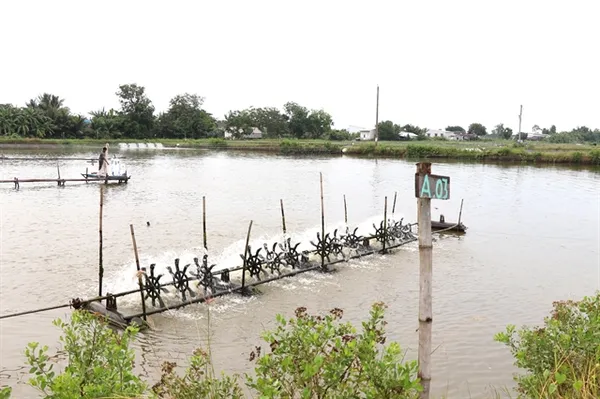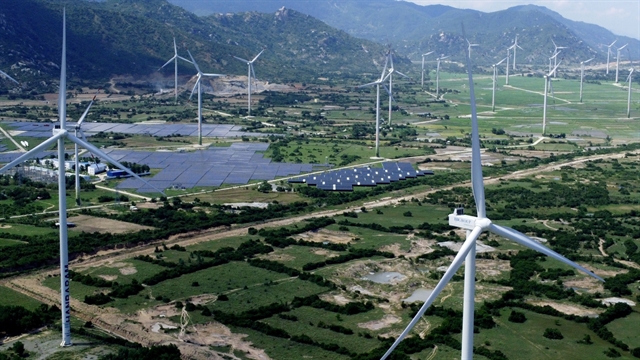 Economy
Economy
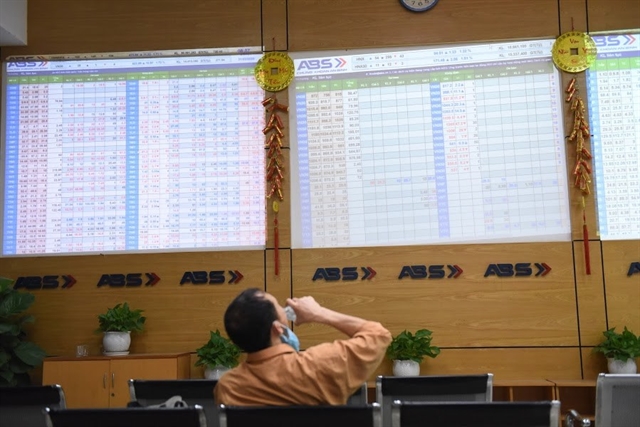
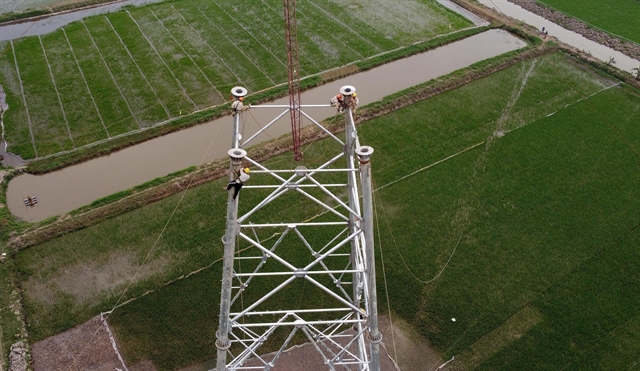 |
| A pole in the circuit-3 500kV Quảng Trạch - Phố Nối line being erected. The transmission line is expected to go operational by the end of June to ensure power supply for the north this year and beyond. — VNA/VNS Photo Huy Hùng |
All eyes are on the construction progress of the 500kV transmission line from Quảng Trạch (Quảng Bình Province) to Phố Nối (Hưng Yên Province) to ensure power supplies are reliable as the hottest period of the summer approaches.
At the meeting on May 23, Prime Minister Nguyễn Minh Chính asked all the resources to be raised to put the transmission line into operation by the end of June, emphasising that this is a priority task which requires drastic efforts and determination from all sectors and levels.
The eighth national power development planning (PDP8), approved in May 2023 and opening a new era for Việt Nam’s energy industry, points out that the country will need around US$1.48 billion per year to upgrade the grid infrastructure in the 2021-30 period.
One of the key projects is the circuit-3 500kV line Quảng Trạch – Phố Nối with four component projects. The line will be 519km long and run through 211 communes of 43 districts in nine provinces with a total of 1,177 pole foundations and a total investment of VNĐ22.3 trillion (US$876 million).
The completion of the project will help increase power transmission capacity from the central region to the north from 2,200MW to 5,000MW, a critical stage in tackling the problem of electricity shortages during peak summer months.
The PM stressed that Quảng Trạch – Phố Nối transmission line is an urgent key national project that plays an important role in ensuring the country’s energy security and requires the engagement of ministries, departments and authorities of all localities where the line runs through.
“There is great pressure that comes with this goal, requiring strong determination, great efforts, and drastic actions with focuses,” he stressed.
A miracle
May 27 marks the 30th anniversary of the circuit -1 500kV North-South line which was considered a miracle uniting the power system of the country’s three regions and contributing to ensuring national energy security. The line, nearly 1,500km long, was completed in two years.
The PM earlier this year said that it took two years to complete the 1,500-km circuit-1 line in 1994. Now, with better technology and experience, the construction of the circuit-3 line must be quicker.
The construction of 500kV Quảng Trạch – Phố Nối line started in October last year.
According to a note of the Government Office on May 25, a large amount of work of the project has been basically completed, including the handing over of all 1,177 foundation locations and 478 out of 513 anchorages. More than 53 per cent of electric poles have already been put up.
The Việt Nam General Confederation of Labour and the project’s developer Việt Nam Electricity (EVN) launched a 120-day labour emulation campaign on the construction site of the circuit 3 line project which will run to the end of June with five of the best: fastest progress, best quality, safest - most economical, most innovative, and best living care.
According to Trương Hữu Thành, deputy director general of the National Power Transmission Corporation (EVNNPT), about 800 technical workers of EVN are participating in installing poles. EVNNPT also works with other corporations, including Viettel and VNPT, PetroVietnam Power Corporation in order to speed up the construction. The electricity wiring is expected to be completed by June 20.
Other efforts
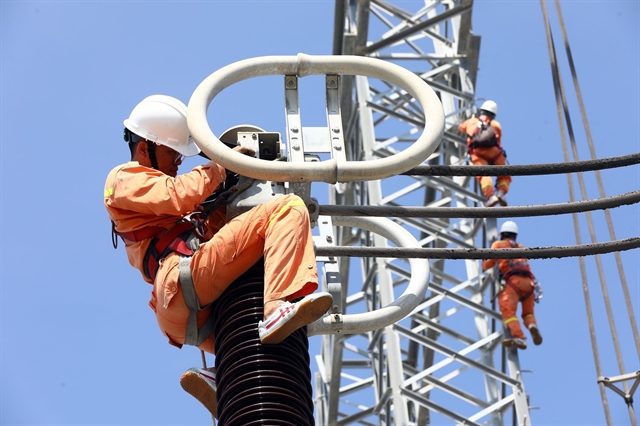 |
| Workers of EVN check an electric transmission system in Bình Thuận Province. Maintenance to ensure efficient operation of the transmission system is important to power supply. VNA/VNS Photo Huy Hùng |
In addition to the circuit 3 500kV Quảng Trạch - Phố Nối line, PM Chính also asked the Ministry of Industry and Trade to speed up the transmission projects to import electricity from Laos.
Plus, it was asked to propose policies to encourage private investments in power transmission projects with the spirit of harmonising benefits and sharing risks.
To ensure a stable power supply for 2024 and beyond, the PM asked for accelerated efforts to diversify power sources, even imports, if necessary, but the focus must be on making the most of the domestic sources.
The Ministry of Industry and Trade must ensure an effective coordination of different power sources, including thermal, hydro, solar, wind and biomass power and prevent incidents due to reasons other than force majeure.
The Việt Nam National Coal-Mineral Industries Holding Corporation Limited (TKV) and the Đông Bắc Corporation must strengthen coal exploitation to ensure coal supply for thermo-electric plants, although efforts must be made to reduce coal imports and prevent coal smuggling.
Priority must be given to supplying gas and oil for power generation in peak months of June and July.
The PM also asked a reasonable roadmap for adjusting electricity prices, stressing that electricity prices must be appropriate to the affordability of the people and enterprises as well as Việt Nam’s economic condition to contribute to stabilising the macroeconomy.
With regard to the direct power purchase agreement (DPPA), the Ministry of Industry and Trade has submitted a draft decree to the Government for approval.
 |
| A wind and solar farm in Ninh Thuận Province. Prime Minister Phạm Minh Chính asked the Ministry of Industry and Trade to ensure an effective coordination of different power sources, including thermal, hydro, solar, wind and biomass power for adequate power supply. VNA/VNS Photo Huy Hùng |
The DPPA mechanism is expected to promote investments in renewable energy as well as the development of a competitive retail market in Việt Nam.
At a recent conference, Minister of Industry and Trade Nguyễn Hồng Diên asked investors of gas-fired power projects to report on progress of the projects and solutions with an aim to achieve commercial power generation before 2029.
According to EVN, the total electricity output, including imported power, reached 142.2 billion kWh in the first five months of this year, representing an increase of 12.1 per cent over the same period last year.
As of the end of May, water stored in reservoirs is equivalent to an electricity output of 7.8 billion kWh, 2.1 billion kWh higher than the plan.
The TKV has supplied around 20 million tonnes of coal for electricity generation since the beginning of this year.
The Ministry of Industry and Trade said that these combined efforts meant the power would stay on this year. — VNS



